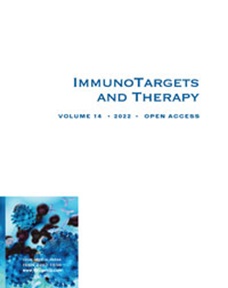Assessing Immune Response to SARS-CoV-2 Infection.
IF 6.2
Q1 IMMUNOLOGY
ImmunoTargets and Therapy
Pub Date : 2020-06-11
eCollection Date: 2020-01-01
DOI:10.2147/ITT.S264138
引用次数: 11
Abstract
Michael R Shurin 1,2 Alison Morris Alan Wells 1 Sarah E Wheeler 1Department of Pathology, University of Pittsburgh Medical Center, Pittsburgh, PA, USA; 2Department of Immunology, University of Pittsburgh Medical Center, Pittsburgh, PA, USA; 3Department of Medicine, University of Pittsburgh Medical Center, Pittsburgh, PA, USA In the XXI century, we have already witnessed the global spread of three previously unknown coronaviruses. In 2002, the first known case of severe acute respiratory syndrome (SARS) occurred in China and SARS coronavirus (SARS-CoV) was identified in 2003. Before SARS pandemic was declared to be over in summer of 2003, about 8500 cases were reported, including almost 900 deaths in 32 countries. Ten years later, in 2012, a novel coronavirus, Middle East respiratory syndrome coronavirus (MERS-CoV), was isolated and was proven to be associated with several clusters of cases, first in the Arabian Peninsula and then in other countries. As a result, almost 2500 cases including more than 850 deaths in 27 countries have been reported. In 2019, a novel β-coronavirus caused severe and even fatal pneumonia in Wuhan China, and rapidly spread to other provinces of China and other countries in 2020. The World Health Organization (WHO) on March 11, 2020, declared coronavirus disease 2019 (COVID-19) caused by severe acute respiratory syndrome coronavirus 2 (SARS-CoV-2) a pandemic. By mid-May 2020, more than 300,000 people have died and over 4,000,000 have been infected by the coronavirus in almost 200 countries and territories worldwide. Coronaviruses were first discovered in the 1930s when an acute respiratory infection of domesticated chickens was investigated, and human coronaviruses were first identified in the 1960s. These early identified human coronaviruses are circulated in the global human population and contribute to ~30% of common cold infections and mild respiratory symptoms and include the coronaviruses NL63, 229E, OC43 and HKU1. There are only seven coronaviruses known to cause disease in humans and the remaining three, MERS-CoV, SARS-CoV and SARSCoV-2 (or 2019-nCoV), are more severe than the four relatively benign earlier counterparts. Although SARS-CoV-2 and SARS-CoV share the same host receptor – the human angiotensin-converting enzyme 2 (ACE2), and in spite of ~80% genetic identity between SARS-CoV 1 and 2, these coronaviruses are different in several epidemiologic and biologic characteristics including transmissibility, virulence, survival, virus–host interactions and, it appears, induction of immune response and immune escape pathways. Like SARS and MERS, SARS-CoV-2 infection manifests most frequently with lower respiratory symptoms. A minority of patients progress to acute respiratory distress syndrome with diffuse alveolar damage. Though COVID-19 symptoms, in general, have presented chiefly within the respiratory system, the infection rapidly spreads to affect the kidneys, nervous and cardio-vascular systems, clotting Correspondence: Michael R Shurin Email shurinmr@upmc.edu ImmunoTargets and Therapy Dovepress open access to scientific and medical research评估对SARS-CoV-2感染的免疫反应。
本文章由计算机程序翻译,如有差异,请以英文原文为准。
求助全文
约1分钟内获得全文
求助全文
来源期刊

ImmunoTargets and Therapy
IMMUNOLOGY-
CiteScore
16.50
自引率
0.00%
发文量
7
审稿时长
16 weeks
期刊介绍:
Immuno Targets and Therapy is an international, peer-reviewed open access journal focusing on the immunological basis of diseases, potential targets for immune based therapy and treatment protocols employed to improve patient management. Basic immunology and physiology of the immune system in health, and disease will be also covered.In addition, the journal will focus on the impact of management programs and new therapeutic agents and protocols on patient perspectives such as quality of life, adherence and satisfaction.
 求助内容:
求助内容: 应助结果提醒方式:
应助结果提醒方式:


